Nature’s Dome Bed Bug Spray: Lasting Defense, 16 oz + 3.4 oz
$32.44 Original price was: $32.44.$29.99Current price is: $29.99.
Sleep easier with a simple plan that actually fits real life. Nature’s Dome Bed Bug Spray: Lasting Defense, 16 oz + 3.4 oz gives you a home bottle for seams and baseboards, plus a TSA-friendly travel size for hotels. The brand’s pages and retail listings highlight plant-derived ingredients, non toxic positioning, and egg kill claims, so you can pair precise contact treatment with heat and encasements for steady results.
Description
Sleepless nights end when a plan actually works in real homes. Nature’s Dome Bed Bug Spray: Lasting Defense, 16 oz + 3.4 oz gives you a family-first option that is formulated for direct contact on the places bed bugs actually hide, while keeping a travel-size bottle ready for hotels and rentals. The brand describes plant-based ingredients and a laboratory-validated kill claim for bed bugs, mites, and their eggs, so you can pair a natural-leaning spray step with smart heat and cleaning routines to reclaim your room with confidence.
Key Customer Benefits
- Knocks down live bugs fast where they hide. Direct contact on seams, tufts, bed frames, and luggage is the first win in any home plan. The brand lists laboratory validation for killing bed bugs, mites, and eggs on contact, including resistant strains, so you can act immediately while you set up the rest of your treatment.
- Pairs well with proven non-chemical steps for better outcomes. Research shows that combining targeted sprays with heat on fabrics and clutter reduction raises success rates in real homes. Hot dryer cycles and steam are documented killers, while essential-oil formulations similar to this category have shown high mortality when used correctly.
- Egg impact matters. Bed bug eggs are tough, which is why products that show egg kill are meaningful in practice. Independent trials on comparable plant-based formulas reported high egg mortality and strong direct-spray results over several days, which supports careful, repeated follow-ups on tufts and crevices.
- A natural-leaning option for family spaces. The listing emphasizes plant-derived ingredients and non-toxic positioning when used as directed. This gives parents and pet owners a route to incorporate a natural bed bug killer for mattresses and baseboards while keeping ventilation and dry-time rules front and center.
- Travel size reduces re-introductions. The TSA-friendly 3.4 oz bottle travels with you for hotels, hostels, and short-term rentals. Spot treat luggage seams and bed legs before you unpack to reduce the chance of bringing hitchhikers home.
- Realistic about expectations. Not all “natural” sprays are equal. Published comparisons found only a few essential-oil products achieved very high mortality, so you should still combine this step with interceptors, encasements, and heat to drive results. This honest approach helps you avoid relying on a single tactic.
Product Description
What this product is
Nature’s Dome bed bug spray is a plant-derived, water-based contact killer available in a 16 ounce home bottle with a companion 3.4 ounce travel size. The brand positions it for bed bugs and mites, including eggs, and advertises “100 percent kill efficacy” with long-lasting defense when used as directed. Listings on the brand site, Amazon, and Walmart repeat the same core claims, including non-toxic positioning for home use.
How it works
In practical use, a plant-based bed bug spray does its best work on contact. You aim short, controlled bursts into seams, tufts, screw holes, and the undersides of slats so the liquid wets the insect and reaches eggs on the surface. The scientific literature on essential-oil style bed bug products helps set expectations.
Peer-reviewed lab and field work shows that certain well-formulated plant-based sprays can achieve very high mortality on direct spray, and some reduce egg hatchability, while residual performance on fabrics tends to be modest. That pattern matches what I see in homes. It gives you fast wins on live bugs and surface eggs, then you rely on heat, encasements, and interceptors to finish the job.
What makes it effective and different
The Nature’s Dome listings lean on three pillars, a formulation built from natural ingredients, an explicit egg claim, and a travel-ready bottle to prevent reinfestation. The brand’s pages and retail listings state “100 percent kill efficacy” and “destroys eggs,” which is meaningful because eggs are often the reason people think the spray “did not work” after week one.
Academic studies on comparable essential-oil products, like EcoRaider and Cedarcide, documented high adult mortality by direct spray as well as reduced egg hatch in controlled tests, while also noting that residual on fabric is limited.
That combination, strong contact results with measured residual expectations, is why I wrap sprays like this inside a larger plan, for example hot dryer cycles, clutter reduction, and bed isolation. If you want a natural-leaning option for mattresses and baseboards, Nature’s Dome fits that role, then the rest of the system carries you to full clearance.
Product Specifications
| Spec | Nature’s Dome Bed Bug Spray, 16 oz bottle | Nature’s Dome Bed Bug and Mite Spray, 3.4 oz travel size |
|---|---|---|
| Product type | Ready-to-use, water-based, plant-derived bed bug and mite contact spray for indoor use on common harborages | TSA-approved travel size version of the same bed bug and mite contact spray for use in hotels, motels, and short-term rentals |
| Size | 16 ounces | 3.4 ounces |
| Stated efficacy | Brand claims “100 percent kill efficacy,” including eggs and resistant strains, when used as directed | Brand claims “100 percent efficacy,” including eggs and resistant strains, when used as directed |
| Intended targets | Bed bugs and mites, including eggs | Bed bugs and mites, including eggs |
| Where to apply | Mattresses and box springs (seams and tufts), bed frames and headboards, sofas, curtains, carpets, baseboards, wall cracks, vehicle interiors | Luggage seams, bed legs and frames, mattress tape edges in travel settings before unpacking |
| Notable positioning | “Safe and non-toxic,” “eco-friendly,” “plant extract-based” according to the brand’s listing copy | “TSA-approved 3.4 oz,” “made from natural ingredients,” positioned for on-the-go prevention |
| Directions summary | Short, controlled spot sprays into seams, tufts, and crevices; repeat as needed per label | Spot treat luggage and sleeping areas when traveling; repeat as needed per label |
| Safety notes from listings | For indoor use. Keep out of reach of children. Use as directed on listed surfaces. Allow surfaces to dry before re-entry or making bed | Same guidance in travel context. Keep off skin and out of eyes. Allow to dry before contact with treated items |
| What is publicly disclosed about ingredients | “Natural ingredients” and “plant extracts.” Some other Nature’s Dome pest sprays list essential oils like geraniol, cinnamon, and cottonseed on their product pages. The bed bug pages emphasize plant-derived formulation but do not enumerate specific actives on the 16 oz or 3.4 oz pages at the time of writing | Same as left column |
| Certifications or registration disclosed | None stated on the brand or current retail pages reviewed | None stated on the brand or current retail pages reviewed |
| Typical use cases | Home remediation and follow-up between heat and cleaning steps | Travel prevention and touch-ups to reduce re-introductions |
How to Use Nature’s Dome Bed Bug Spray
Before you spray
Start by reducing hiding places and separating what can be heat-treated from what cannot. Bag linens, soft toys, and clothes, then run them through a hot dryer cycle for about thirty minutes. Extension programs and EPA both emphasize that a hot dryer is the reliable kill step for bed bugs and their eggs, and that washing alone often misses the mark. After drying, seal items in clean bags or bins so they stay bug-free while you treat the room.
Next, vacuum slowly along mattress seams, box-spring tape edges, bed frame joints, baseboards, and the floor where the bed normally sits. Use the crevice tool and empty the vacuum into a sealed bag right away, then take it to an outdoor bin. Public health guidance recommends daily vacuuming during the first week to knock down populations while you layer in other steps.
Isolate the bed so bugs cannot climb up from the floor while you work. Pull the frame a hand’s width from the wall, tuck hanging bedding so it does not touch the floor, zip on mattress and box-spring encasements if you have them, and place pitfall interceptors under each bed leg. Rutgers research shows these passive monitors are inexpensive, improve detection, and physically trap climbers so you can measure progress between spray sessions.
Where and how to apply the spray
Shake the bottle, crack a window for airflow, and wear basic PPE such as gloves and eye protection. Test a small hidden area first. With bed bugs, placement beats volume. Aim short, controlled bursts directly into seams, tufts, screw holes, headboard joints, slat ends, and the first few inches of carpet where it meets the baseboard. Let surfaces dry before making the bed or re-entering the room. EPA’s do-it-yourself guidance stresses targeted applications to harborages and letting treated surfaces dry fully, rather than soaking fabrics where you sit or sleep.
Work in a tight loop: mattress seams and buttons, box-spring tape edge and staples, bed frame cracks, headboard mounting points, baseboards behind the bed, then adjacent seating such as a sofa seam or recliner hinge. Move methodically from the sleeping area outward so you do not skip likely hotspots. If you must set treated items aside, mark and seal them to avoid cross-contamination until they are dry and safe to return.
Follow-up schedule
Plan two to three contact passes in the first two weeks, then use your interceptors to decide if you need a third or fourth pass. A practical rhythm that aligns with extension and field practice is: Day 1 deep prep and spray, Day 7 focused touch-ups on any fresh fecal specks or cast skins, Day 14 a final pass if traps still show activity.
Keep running your dryer routine for textiles on treatment days and keep the bed isolated until traps stay empty. EPA’s integrated pest management advice is clear: combine chemical or plant-derived contact tools with non-chemical steps like heat, encasements, and monitoring to reach full control.
Laundry and clutter
Heat wins on washable items. University and state guidance consistently notes that a medium to high dryer setting for about thirty minutes kills all stages in a typical load. Store the clean load in sealed containers so it stays clean while the room finishes treatment.
For bagging and moving items to the laundry, the University of Kentucky suggests using disposable bags so any shaken-off bugs stay contained on the way to the machines. If you are managing a very full room, the r/Bedbugs community recommends tackling clutter in small zones and boxing items you truly need so you can keep floors clear for vacuuming and spray placement.
Travel routine with the 3.4 ounce bottle
On arrival, park luggage on a rack or in the bathroom while you inspect mattress corners, the headboard, and bed legs. Consumer reports suggest this simple habit prevents a lot of misery later. If you decide to treat, spot-spray luggage seams, wheel housings, and the rack contact points, then let them dry before unpacking.
When heading home from a suspicious stay, put travel clothes straight into a hot dryer before washing. The 3.4 ounce size meets TSA’s liquid limit for carry-on when packed in your one-quart bag with other travel liquids. Rules evolve by country and airport, so check the current policy before you fly.
Safety limits
Always follow the product label and keep children and pets out until treated surfaces are dry. Do not saturate sleeping surfaces and do not mix this spray with other pesticides unless a label explicitly allows it. If traps keep catching bugs after several diligent passes, bring in a professional. EPA’s top tips include staying calm, continuing IPM steps, and escalating to licensed help when needed.
Frequently Asked Questions
Does Nature’s Dome actually kill bed bug eggs, or only live bugs?
The brand says the formula kills adults, nymphs, and eggs. Independent research on comparable plant-derived bed bug sprays found high mortality on direct spray and meaningful reductions in egg hatch, while noting that residual on fabric is limited. That is why I recommend precise contact applications plus heat and encasements.
How often should I reapply if I still see activity after the first pass?
Plan two to three focused follow-ups over the first two weeks, then decide based on trap counts. EPA’s integrated pest management advice is to combine targeted applications with monitoring and heat steps until traps stay empty.
Can I spray my mattress and box spring directly?
Yes, but use short, controlled spot sprays into seams, tufts, labels, and along the tape edge. Allow everything to dry before making the bed. EPA’s do-it-yourself guidance stresses targeted applications to cracks and hiding places rather than soaking sleeping surfaces. Add encasements after dry time to lock in any stragglers and simplify inspections.
Is this safe around kids and pets when used indoors?
The product is positioned as plant-derived with “safe and non-toxic” language when used as directed. Many plant-based products in this category qualify as minimum-risk under EPA’s 25(b) exemption, which covers certain ingredients judged to pose little to no risk when used per label. Always keep people and pets out until treated items are completely dry and follow your bottle’s label.
Do I need encasements and interceptors, or is the spray enough?
Use all three. Encasements trap bugs already inside mattresses and make future inspections simple. Interceptor traps under each bed leg both monitor and physically reduce populations. Rutgers studies show interceptors improve detection and catch climbers that would otherwise reach the bed.
I travel a lot. Is the 3.4 ounce bottle actually allowed in carry-on?
Yes. The current U.S. TSA rule allows liquids up to 3.4 ounces each in a one-quart bag. There has been public talk about changing liquid rules, but nothing universal has replaced the 3.4-ounce limit. Pack the bottle in your liquids bag and confirm the latest rules before flying.
What is the best way to keep bed bugs out of my luggage and clothing after a trip?
Inspect the mattress corners, headboard, and bed legs; keep bags on a rack or in the bathroom. When you get home from a risky stay, put travel clothes straight into a hot dryer before washing. EPA and university guidance confirm a hot dryer cycle for about thirty minutes kills bed bugs and eggs; washing alone often does not.
Do essential oil sprays really work, or is that a myth?
Online forums are full of mixed anecdotes. The better data comes from lab and field studies: specific plant-derived formulations have shown high direct-spray mortality and reduced egg hatch, but weaker residual on fabrics. Translation for the home: place your contact sprays precisely, then lean on heat, encasements, and traps to close the gap.
Is it true that rubbing alcohol is a quick fix?
Alcohol can kill on a direct hit, which is why you will see it suggested in forums, but it is flammable, offers no lasting protection, and is not a control plan by itself. Safer, evidence-based steps are targeted spraying, hot dryer cycles, encasements, and interceptors.
Do I need to throw out my mattress or couch?
Usually no. Public health FAQs advise against discarding furniture unless it is structurally damaged or cannot be treated. If you do dispose of an item, mark it clearly so no one else takes it home. Encasements and methodical treatment typically save the furniture and your budget.
What temperature kills bed bugs in laundry, and for how long?
Guidance from EPA and universities points to a hot dryer for about thirty minutes as the reliable kill step for all stages. If you launder, aim for about one hundred twenty degrees Fahrenheit water or follow your appliance’s hot setting, then dry on high. Store clean items in sealed bags or bins during room treatments.
Why do people say to add interceptors and encase the bed before spraying the rest of the room?
Because it isolates your sleeping area and gives you clean readouts. Interceptors show progress immediately, and encasements prevent bugs inside the mattress and box spring from biting or escaping. Rutgers and other field work highlight how these simple tools improve detection and reduce populations over time.
What if I follow the plan and still see catches in my traps after two to three weeks?
Keep up the dryer routine and targeted touch-ups. If trap counts do not decline or if you live in multi-unit housing where reinfestation is common, bring in a licensed professional. EPA recommends escalating when self-help measures are not delivering steady progress.
Conclusion
If bed bugs have been stealing your sleep, you do not need a miracle. You need a plan that matches how they live. Nature’s Dome Bed Bug Spray: Lasting Defense, 16 oz + 3.4 oz fits the contact step of that plan, and the manufacturer’s pages clearly state the kill and egg claims along with natural, non toxic positioning. Use it where it matters most, in seams, tufts, screw holes, headboards, and baseboards, then let surfaces dry before you remake the bed.
Pair this contact work with the proven basics that researchers and extensions keep repeating. Run a hot dryer for about thirty minutes on washable items to kill all stages. Add encasements and interceptors so the bed is isolated and you can measure progress with trap counts. This combination, targeted contact plus heat and monitoring, is what moves real homes from panic to clearance.
Related products
-
Sale!
Bed Bug Spray Extra Strength 24 oz + Disposable Coveralls Medium Bundle
$39.74Original price was: $39.74.$35.76Current price is: $35.76. Buy Now -
Portable Electric Bed Bug Heater, 19,659 BTU ePro 400 Bundle for 400 sq ft Rooms
$1,999.00 Buy Now -
Sale!
Ortho Home Defense Max 3-Step Bed Bug Solution System
$52.97Original price was: $52.97.$45.53Current price is: $45.53. Buy Now -
Harris Queen Bed Bug Proof Mattress Encasement, Waterproof Protector
$31.99 Buy Now
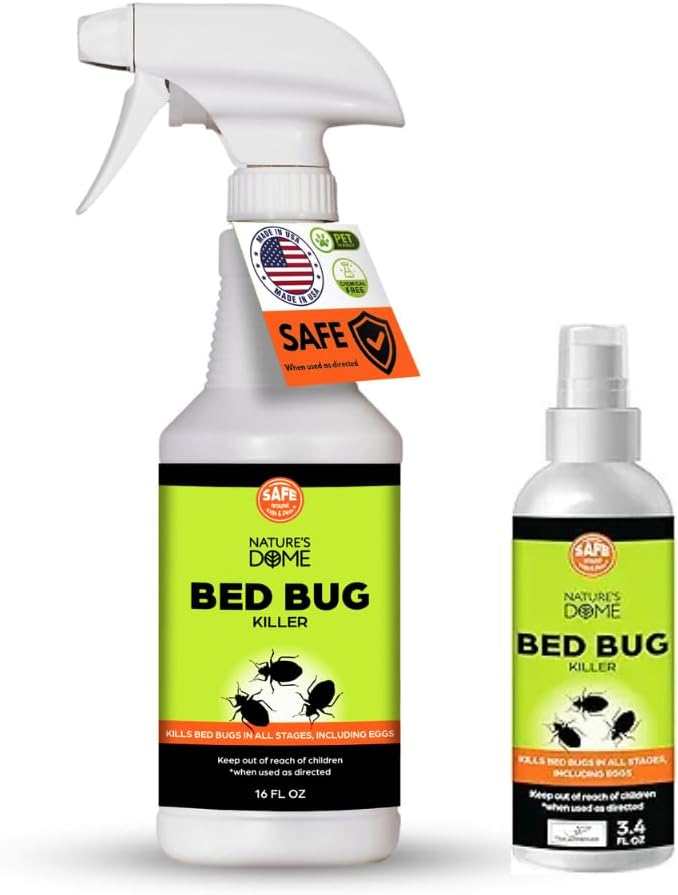
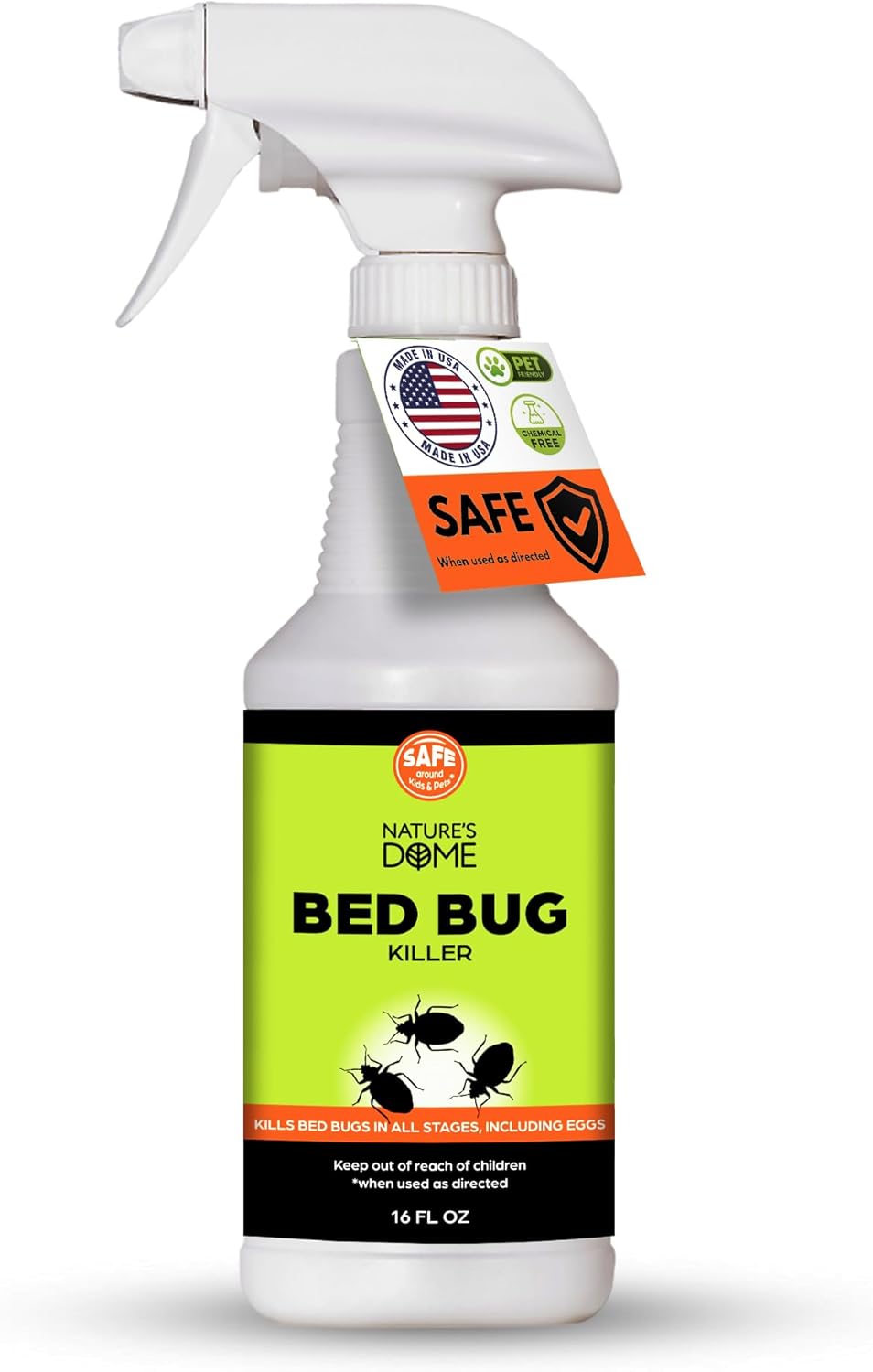
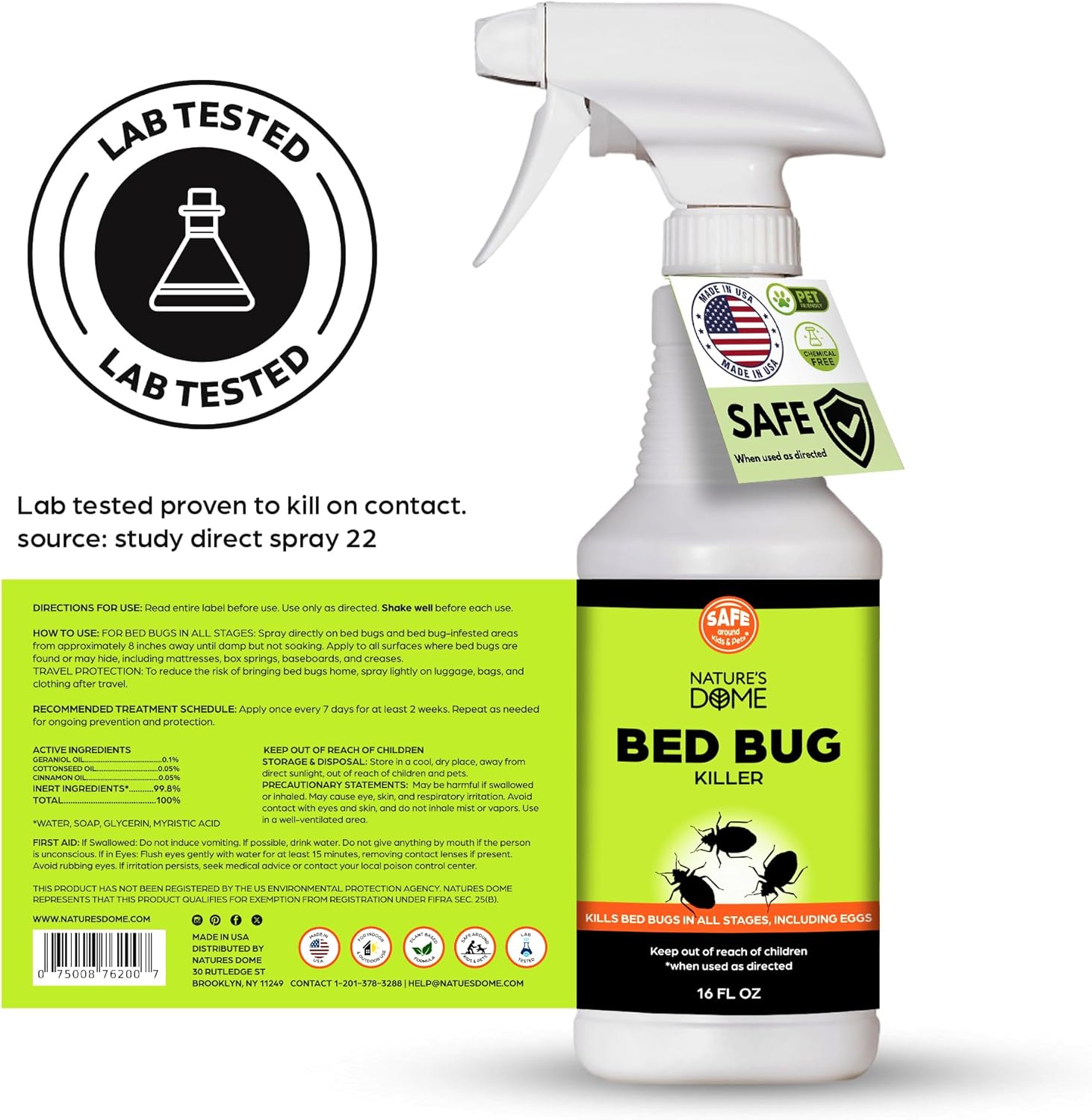

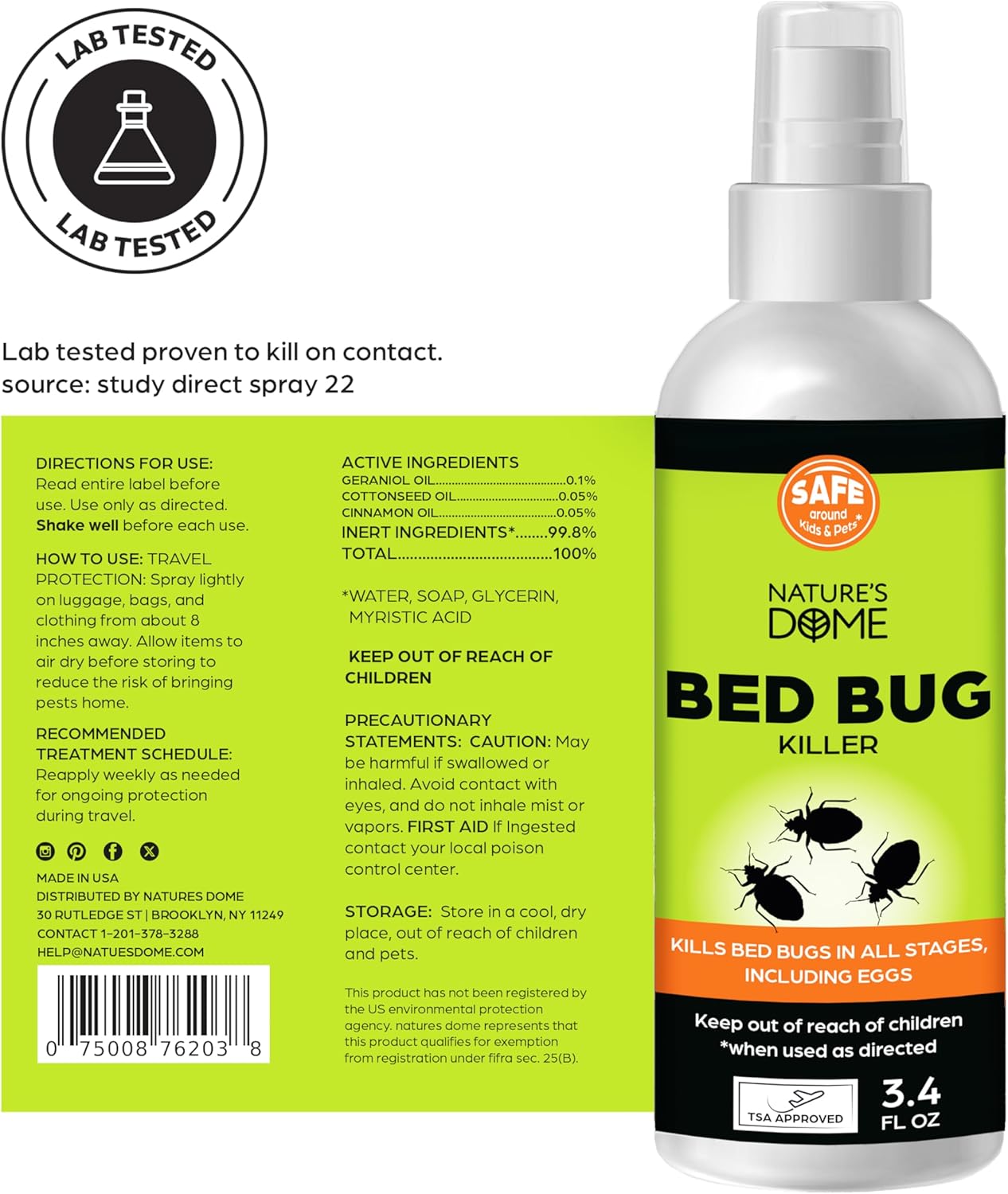
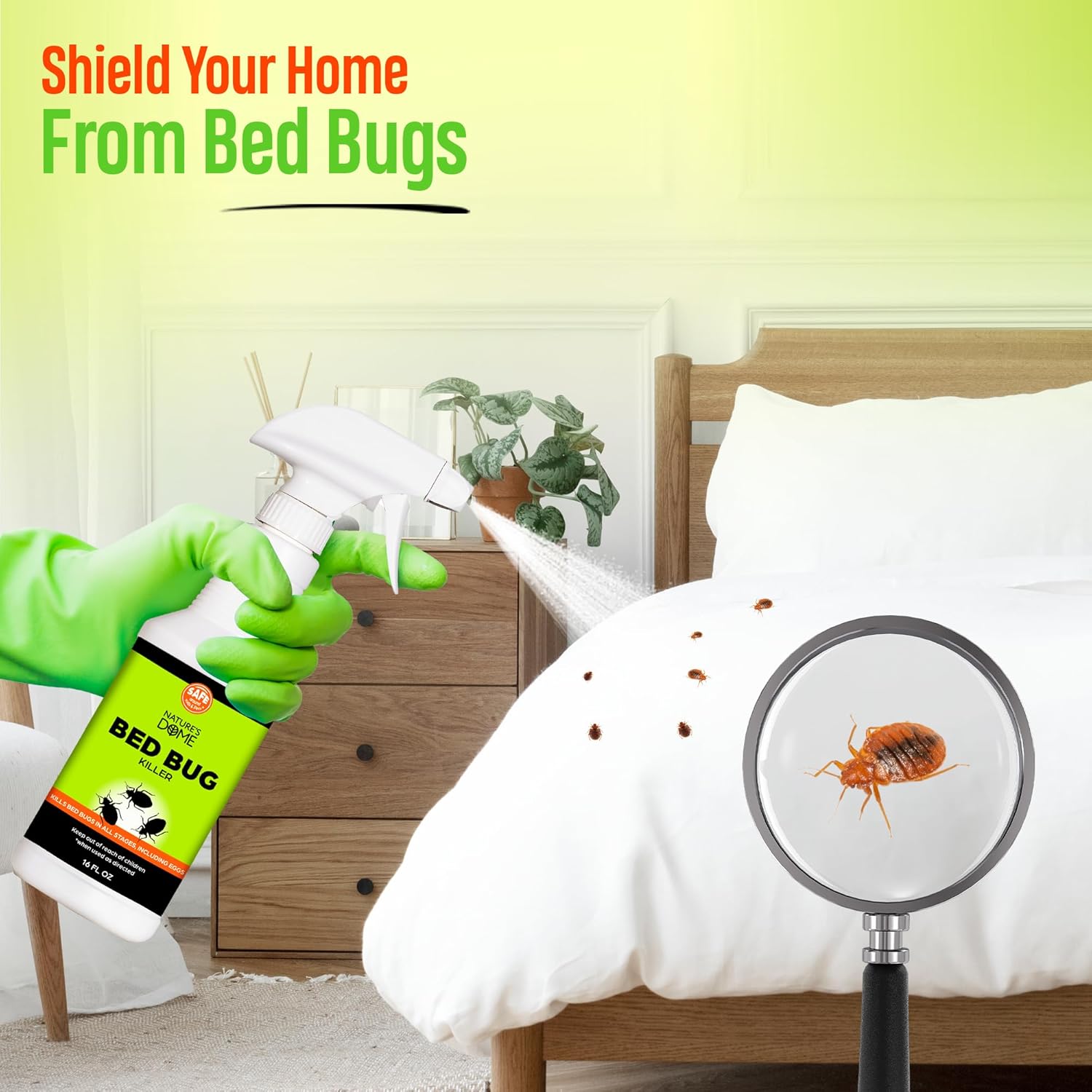
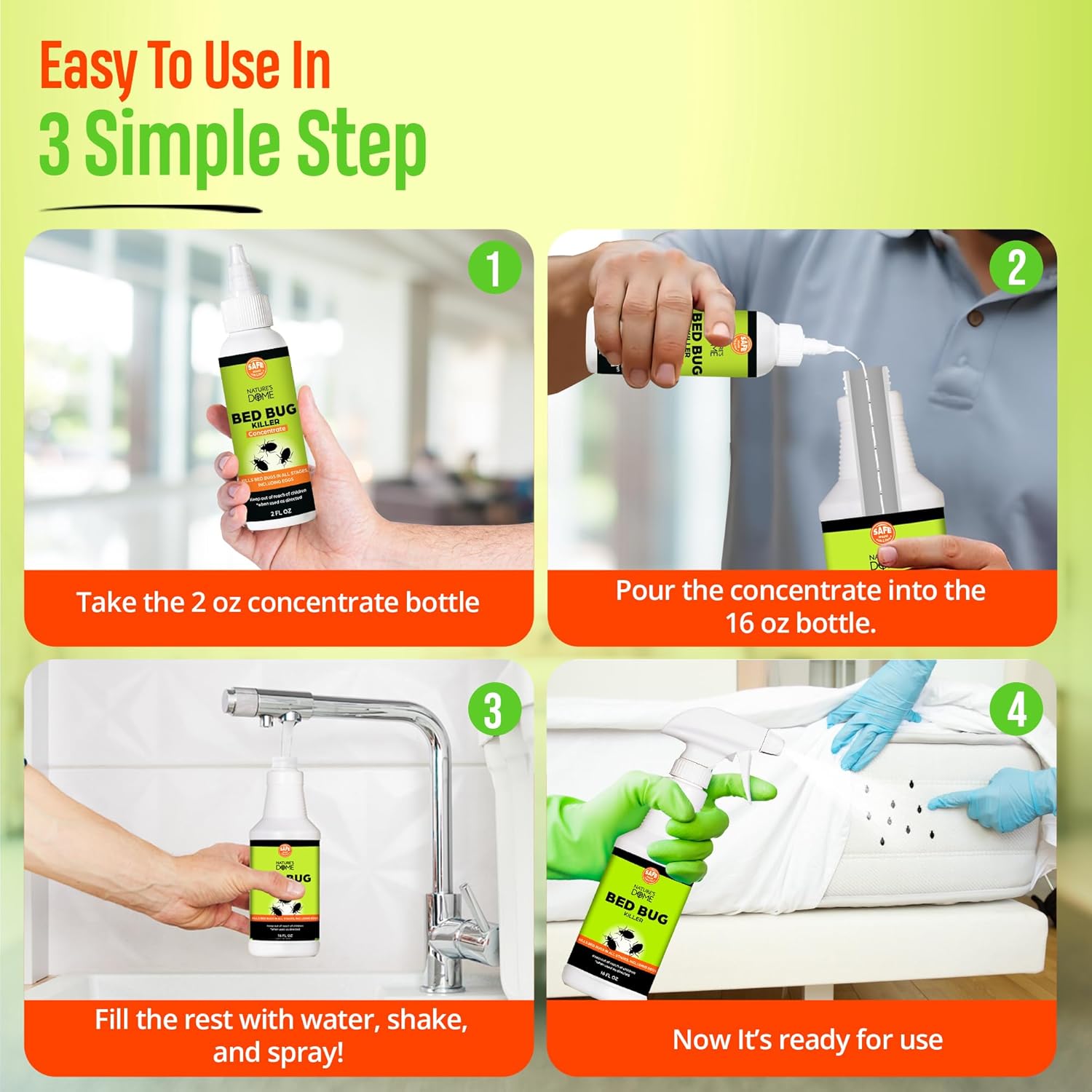
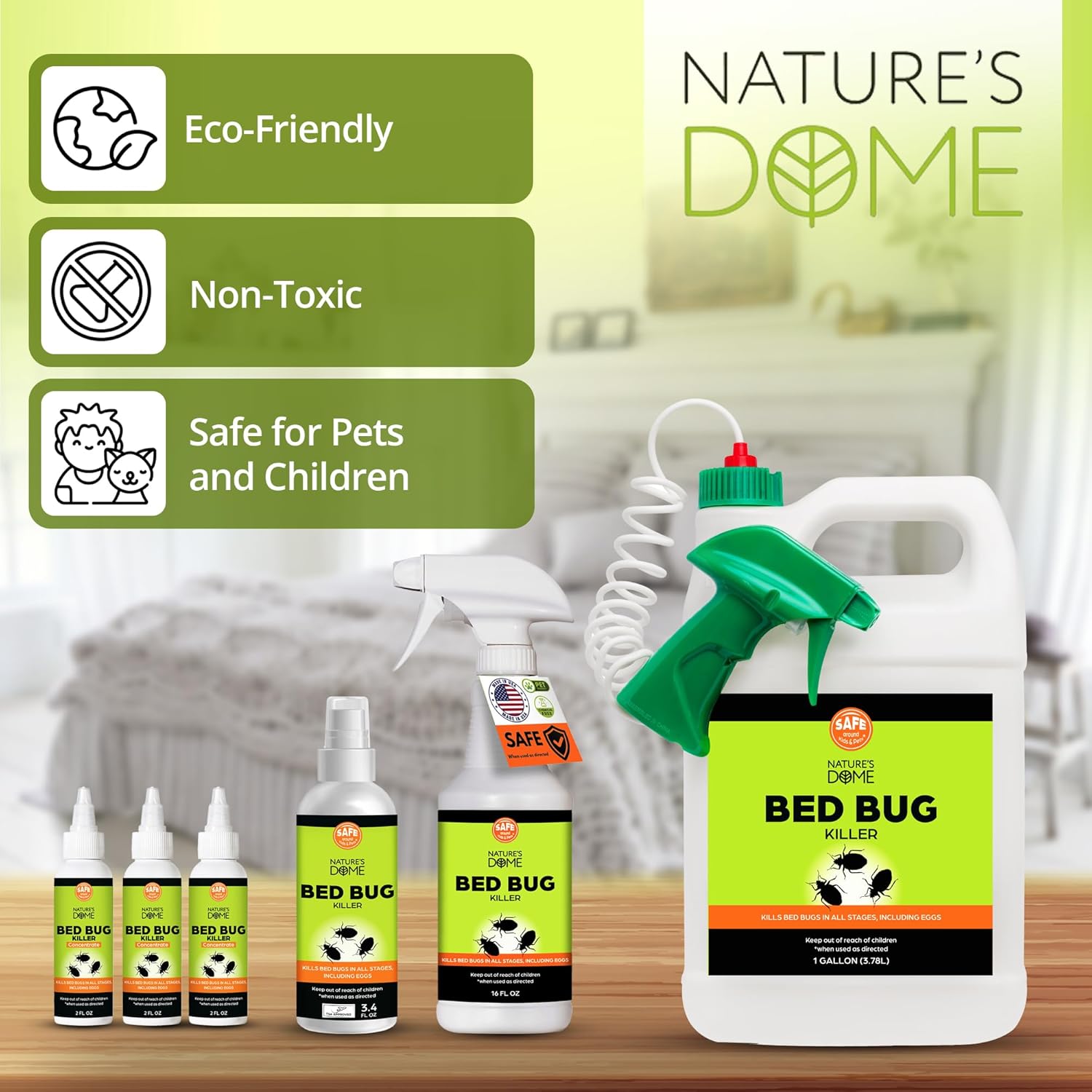
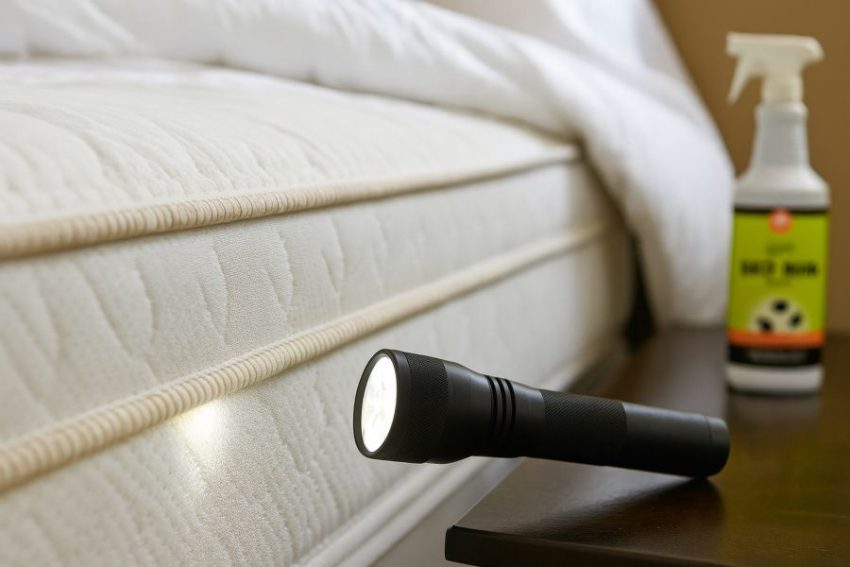
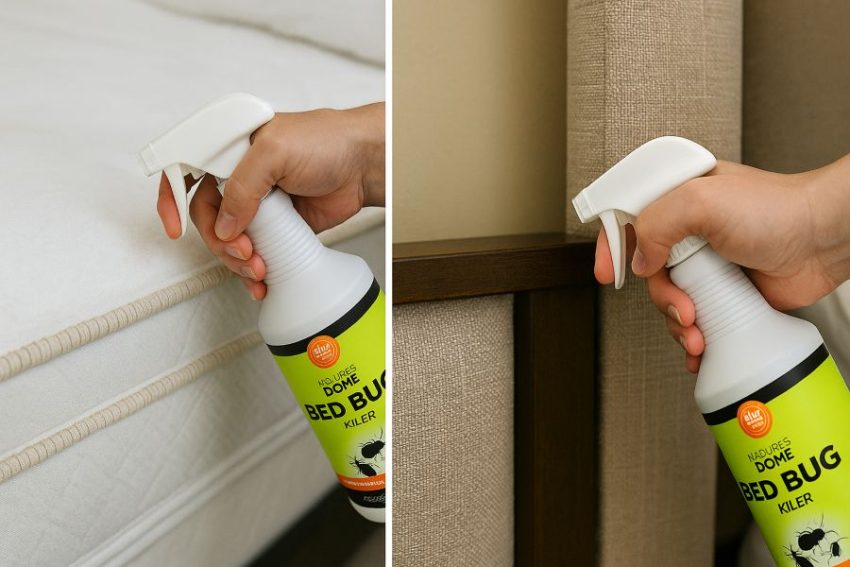
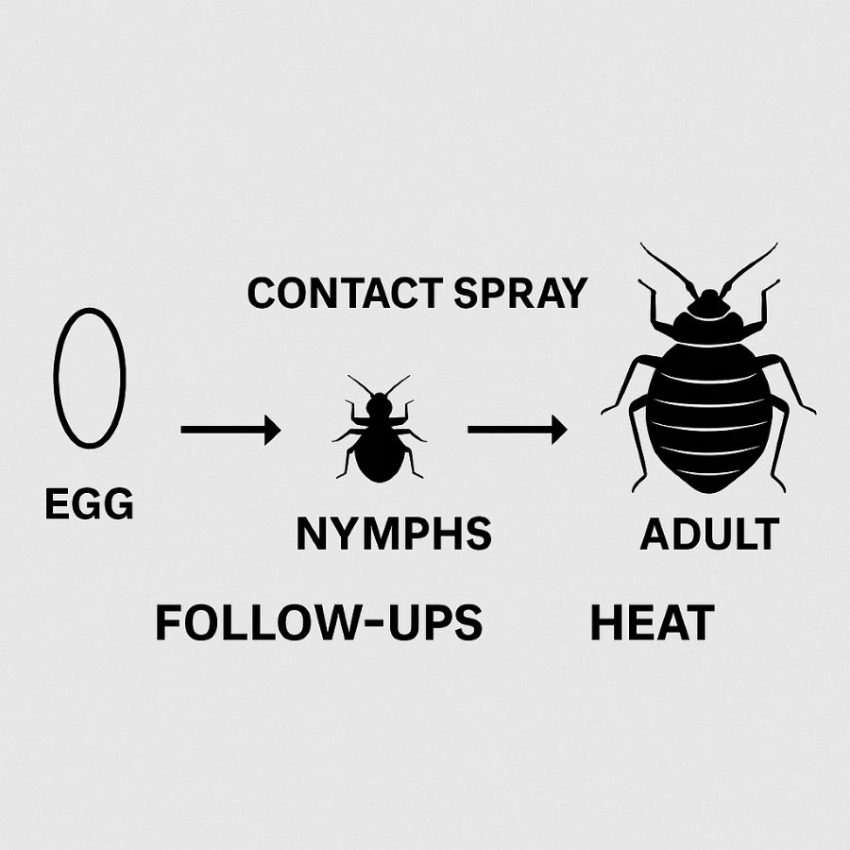
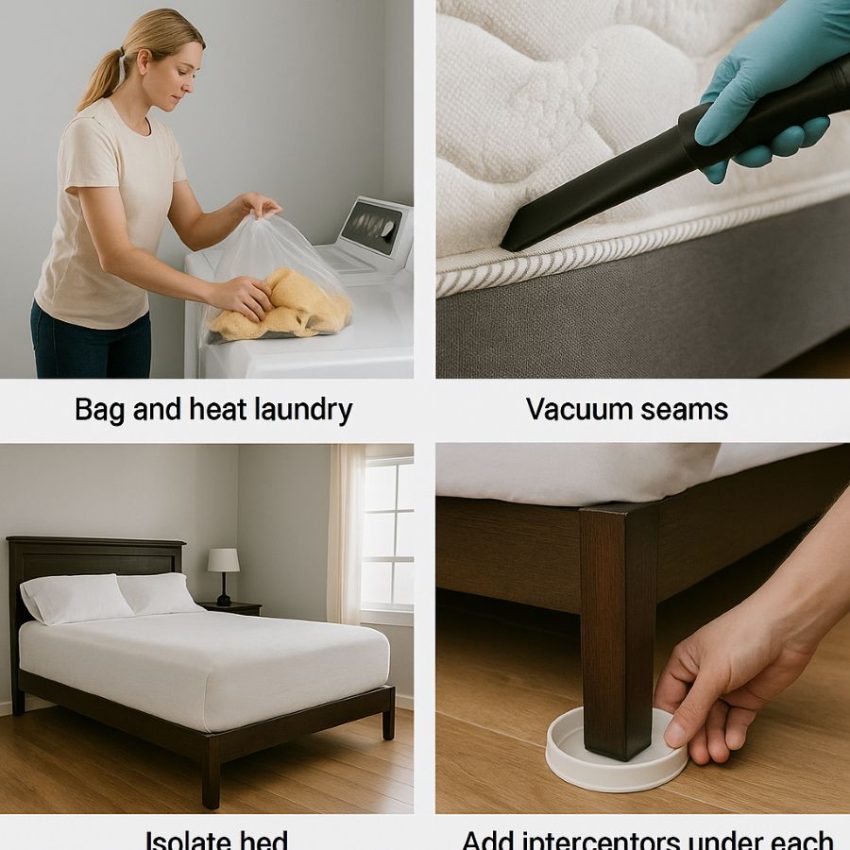
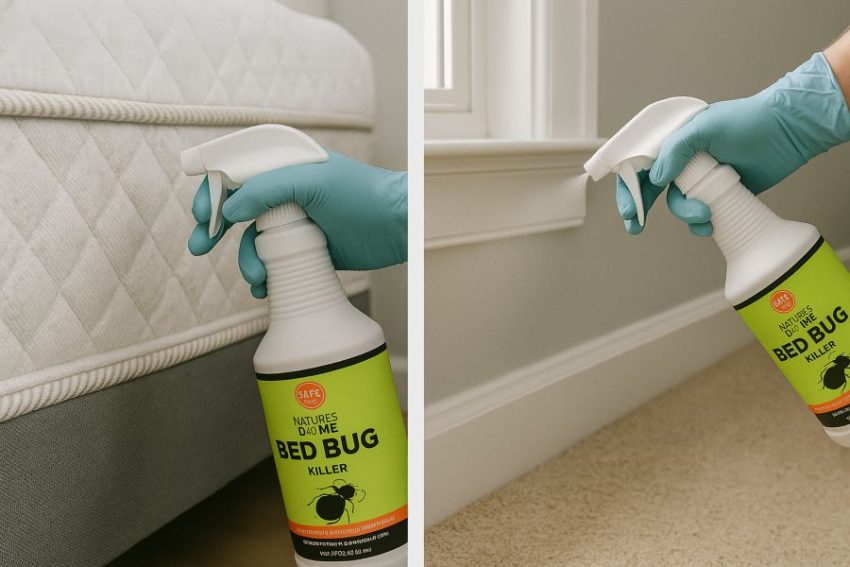
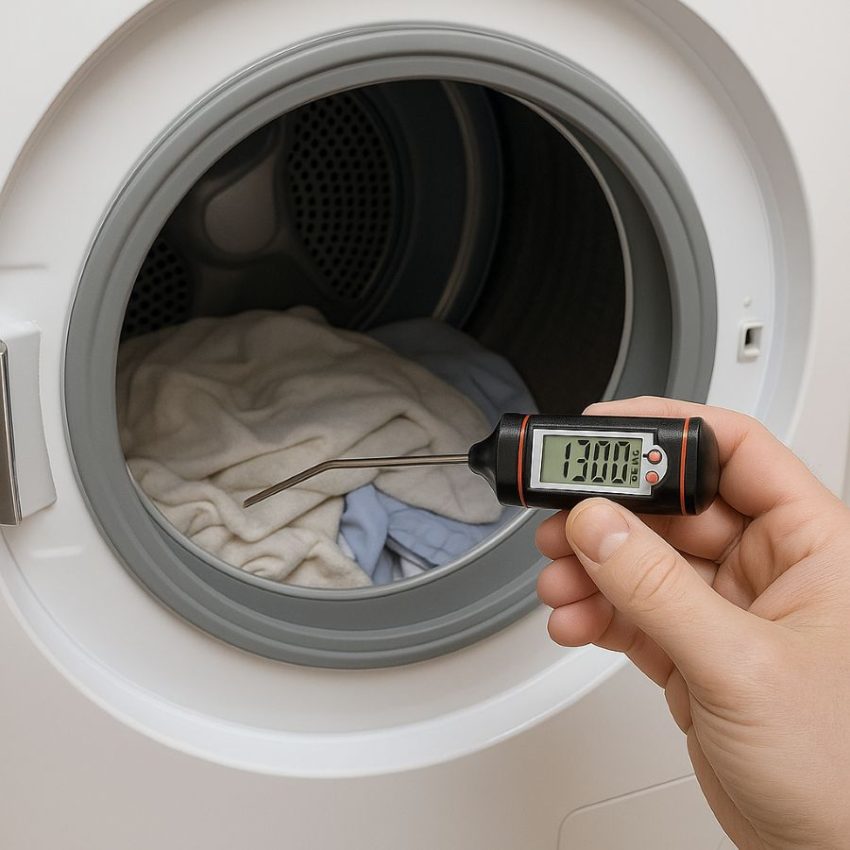
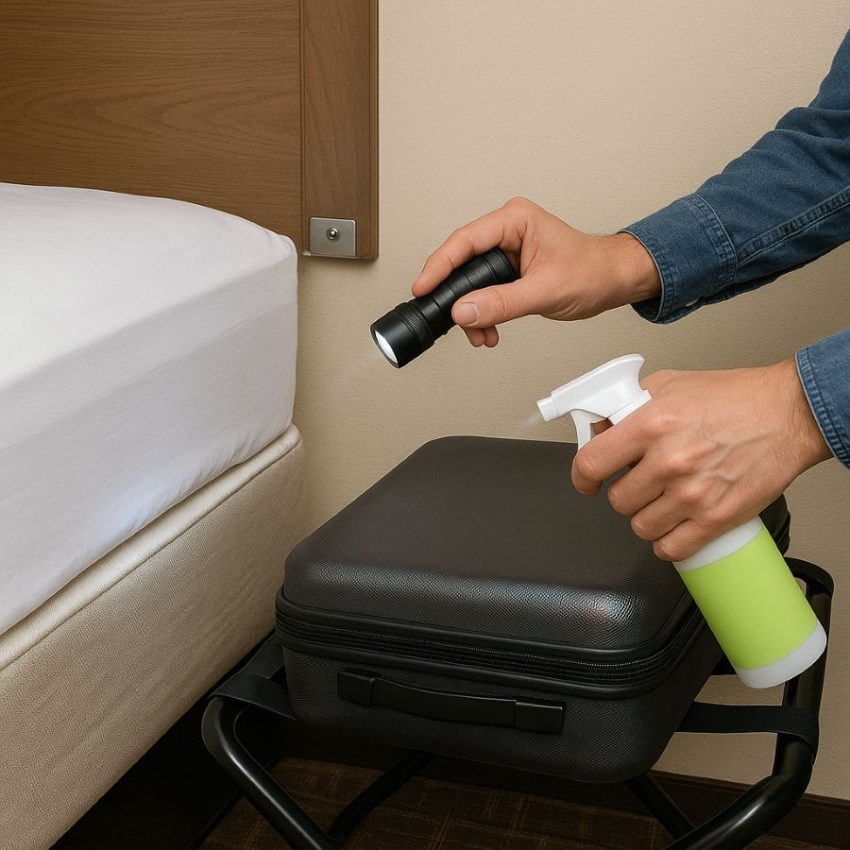
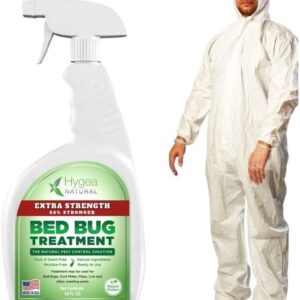
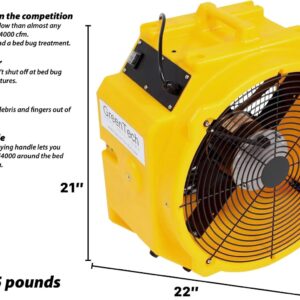
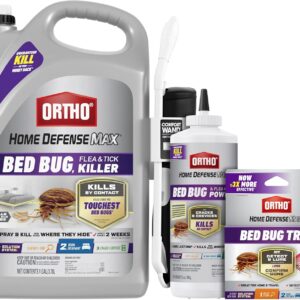
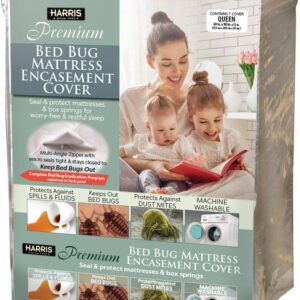
Reviews
There are no reviews yet.